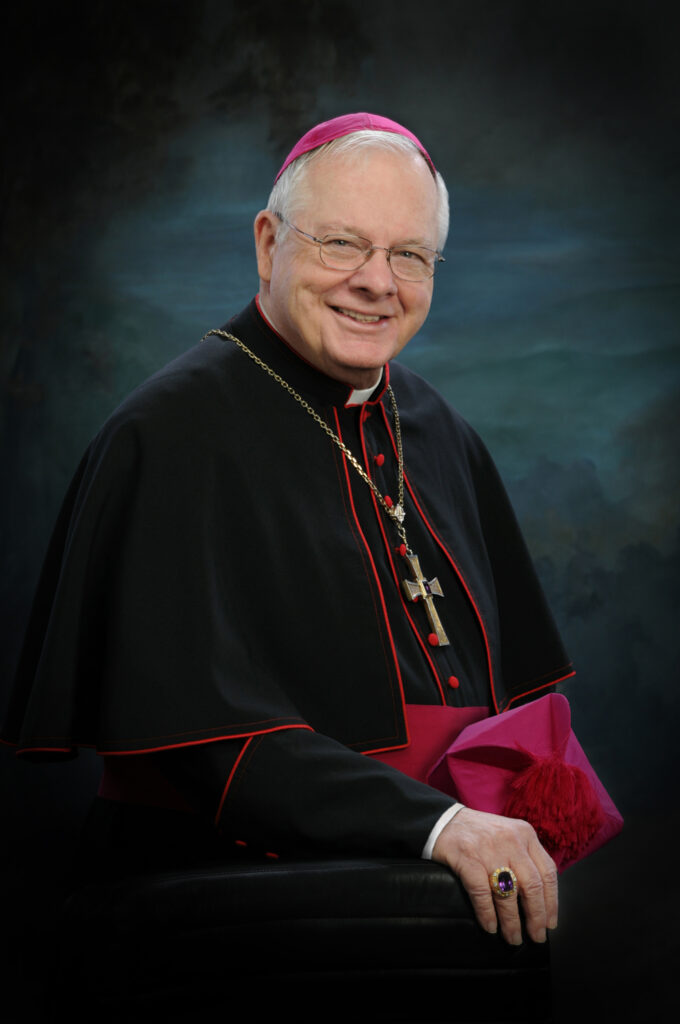
KANSAS CITY, Kan. — Will Rogers might have originated the phrase, “I never met a man I didn’t like,” but no man embodied it quite like James Patrick Keleher.
“Long before Pope Francis talked about the joy of the Gospel,” said his former chancellor Msgr. Tom Tank at the archbishop’s 60th anniversary of ordination, “Archbishop Keleher was living it so very beautifully.”
“He came in and really took the archdiocese by storm because of his love of people,” added Msgr. Tank. “Not just some people, but everyone.”
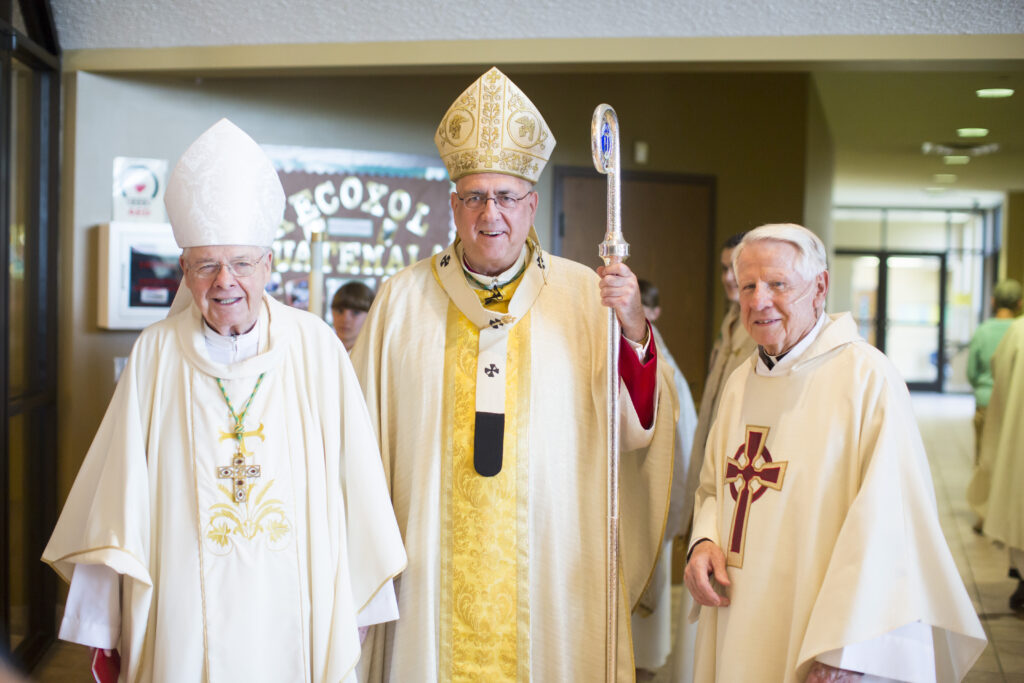
Now, everyone is a little poorer for his passing.
Archbishop Emeritus James P. Keleher, 93, the tenth ordinary and third archbishop of the Archdiocese of Kansas City in Kansas, died Nov. 9 of natural causes at his residence at Santa Marta retirement community in Olathe.
He served as archbishop here from Sept. 8, 1993, to Jan. 15, 2005, and continued to assist his successor Archbishop Joseph F. Naumann as archbishop emeritus in various ministries as his health permitted.
Early years
James Patrick Keleher was born on July 31, 1931, on the South Side of Chicago. He was one of the two children of James and Rita (Cullinane) Keleher. The family belonged to St. Felicitas Parish.
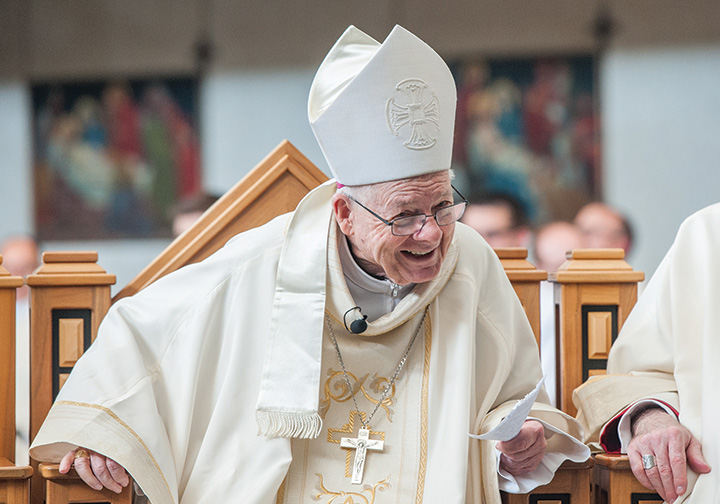
His father was a salesman for Will & Baumer Candle Company, which supplied area parishes. His mother, an immigrant from Ireland, was a nurse before becoming a homemaker.
He attended Mount Carmel High School for one year before he entered Archbishop Quigley Preparatory Seminary. After graduating from the minor seminary in 1951, he entered the University of St. Mary of the Lake/Mundelein Seminary in Mundelein, Illinois. He graduated and was ordained a priest on April 12, 1958, in the Chapel of the Immaculate Conception at St. Mary of the Lake by Cardinal Samuel Stritch.
Following ordination, Father Keleher continued his studies at St. Mary of the Lake. He graduated with a doctorate in sacred theology in 1962 and served as chaplain from 1958 to 1961 at the convent of the Benedictine Sisters of Perpetual Adoration.
Lifelong educator
He was a teacher and academic dean at Quigley Preparatory Seminary North from 1961 to 1969, and served as associate pastor from 1961 to 1963 at St. Henry Parish in the Rogers Park neighborhood of Chicago.
In 1966, he was named academic dean and taught religion and social studies at the North Campus of Quigley Seminary. While there, he graduated in 1967 with a master’s degree in educational administration from Loyola University of Chicago. He also did postdoctoral work in spirituality at the Pontifical Gregorian University in Rome.
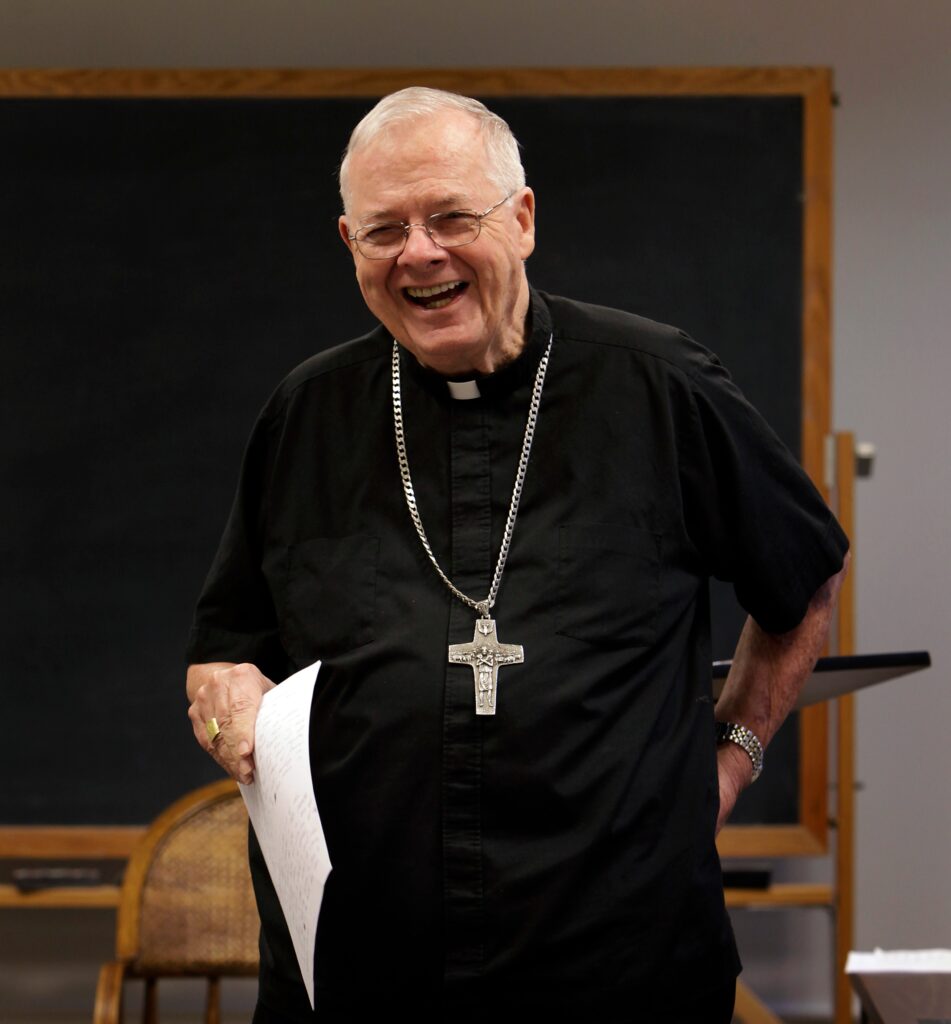
Father Keleher then served as acting dean of studies and dean of formation from 1969 to 1972 at Niles College Seminary, Chicago.
From 1975 to 1978, he was rector of Quigley South. He became dean of formation and a teacher at St. Mary of the Lake in 1972 and was appointed president and rector in 1978.
On Oct. 23, 1984, Pope John Paul II appointed Father Keleher the sixth bishop of the Diocese of Belleville, Illinois. He was consecrated bishop on Dec. 11, 1984, and served until 1993, when the pope appointed him archbishop of the Archdiocese of Kansas City in Kansas on June 28, 1993, succeeding Archbishop Ignatius J. Strecker. Archbishop Keleher was installed on Sept. 8, 1993, at the Soldiers & Sailors Memorial Hall in Kansas City, Kansas.
Friend for life
Father William O’Mara differed from Archbishop Keleher in most ways.
But that didn’t stop the two from enjoying more than 70 years of friendship.
“He really appreciated friendships, and we appreciated each other’s,” said Father O’Mara, who is still in ministry in the Archdiocese of Chicago. “We challenged each other. We differed in a lot of different ways.”
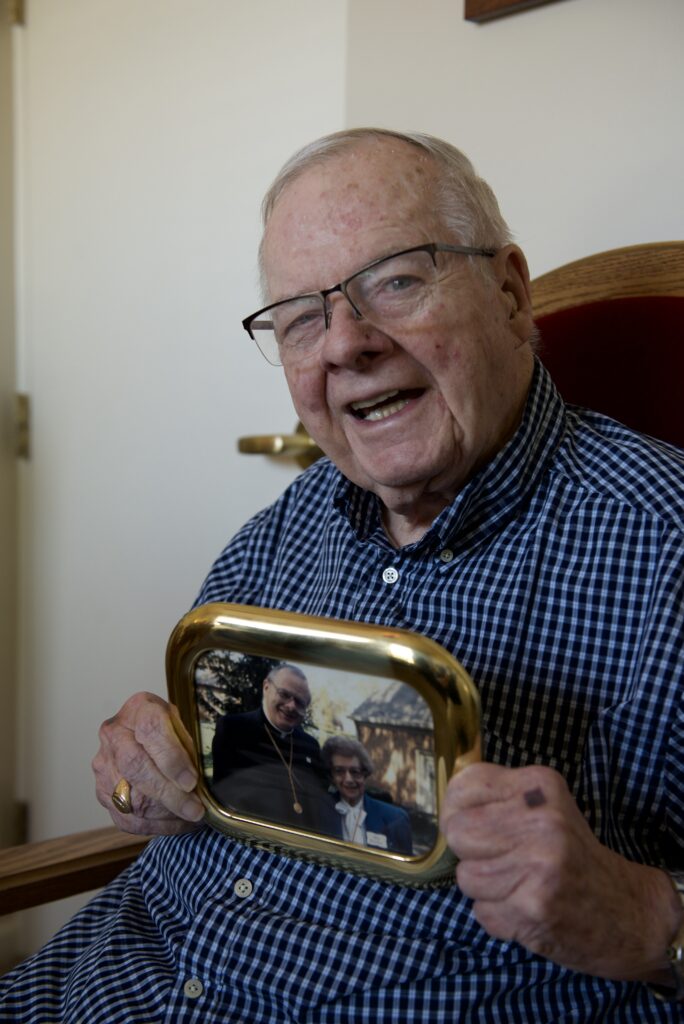
The pair met in grammar school and went on to attend seminary together, where they became good friends.
Father O’Mara described himself as an introvert, while Archbishop Keleher was comfortable talking to anyone.
“He might meet you once, and you’d feel like he’s known you for a long time,” said Father O’Mara. “He makes people feel comfortable.”
“He was easy to talk to because he really paid attention to you when you were talking,” he added.
Father O’Mara recalled going out to eat with his friend, who would strike up a conversation with the waiter.
“Before you’d know it, he’d be telling them to go to church,” said Father O’Mara.
“He’d love to talk about his faith, about the church,” he continued. “He was never embarrassed to do that.”
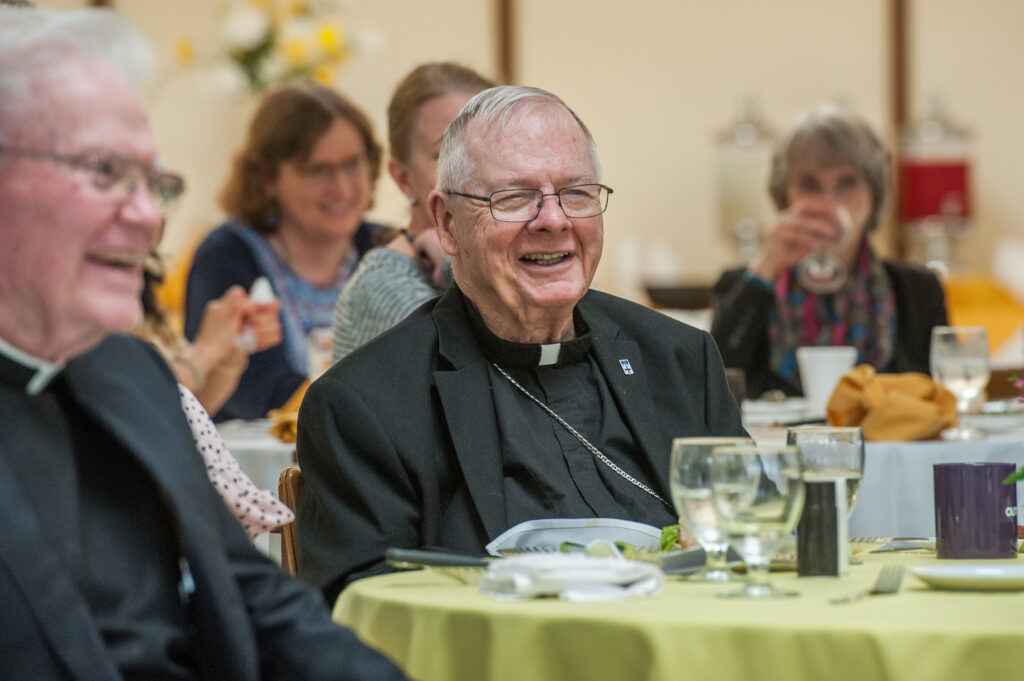
Father O’Mara appreciated his friend’s inquisitive nature, sense of humor and ability to connect with those around him.
The pair spoke on the phone every day, up until the day before Archbishop Keleher passed away.
“He was a shepherd,” said Father O’Mara of his lifelong friend.
Focus on youth
Archbishop Keleher was instrumental in the development of Camps Kateri and Tekakwitha, faith-based archdiocesan summer camps that host some 1,700 young people each summer, with co-directors Deacon Dana and Deborah Nearmyer.
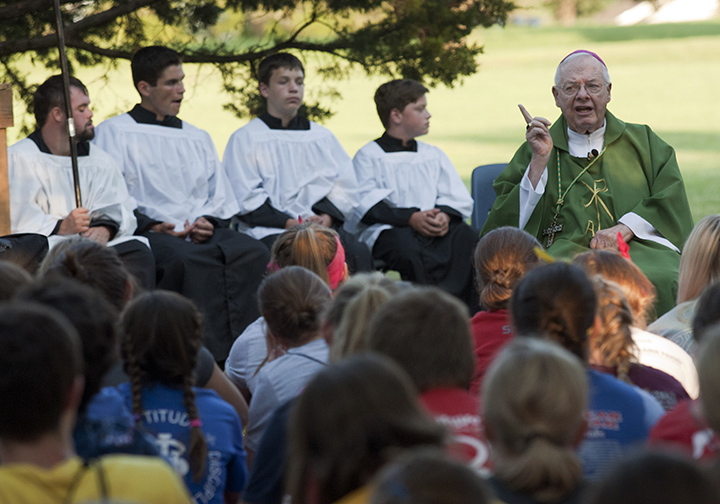
In the early years, the camps were held at the Grange and Perry House at Lake Perry but then found their permanent home with the purchase of Prairie Star Ranch in Williamsburg.
Archbishop Keleher backed fundraising efforts for the ranch as the programs and infrastructure were developed.
“I think he wanted it to be an opportunity for our young people to have a great time enjoying themselves while at the same time . . . [fostering] a deeper relationship with Christ and the church,” said Msgr. Tom Tank, who first proposed the camp.
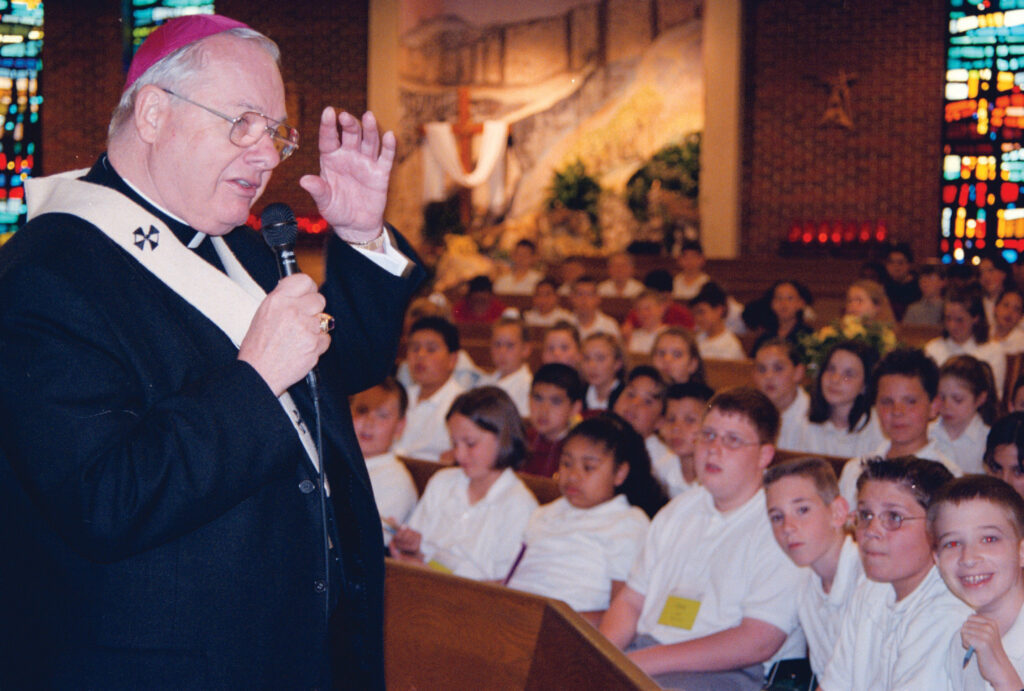
Himself a product of Catholic schools, Archbishop Keleher was also a strong supporter of Catholic education in the archdiocese.
“I think Archbishop Keleher saw the importance of the archbishop’s support,” said Kathy O’Hara, associate superintendent of archdiocesan schools from 1998 to 2001, and superintendent from 2001 to 2019. “He had a love of Catholic schools himself. And so, it was a good match for him and this archdiocese, because it had a tradition of encouraging parents to take advantage of Catholic schools. So, parents had a desire for that, and Archbishop Keleher fueled that desire.”
The Keleher years were a time of enrollment growth and construction for Catholic schools in the archdiocese, with total enrollment reaching 15,748 for the 2004-05 school year.
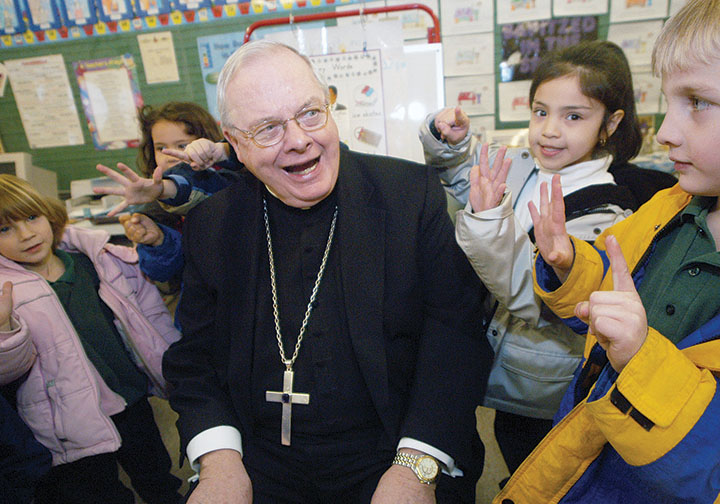
One of the significant developments for Catholic education in the archdiocese during his time as archbishop was the establishment of the Gardner Plan in 1997, later renamed the Catholic Education Foundation (CEF). The CEF’s tuition assistance scholarships have since become a vital source of support to under-resourced Catholic schools.
Archbishop Keleher was also instrumental in the founding of St. James Academy in Lenexa. In a time when dioceses around the nation were closing schools, Archbishop Keleher was determined to build one.
“We spent a lot of time together as an administrative team with Archbishop Keleher and Mike Alex, our first president,” said Andrew Tylicki, 12-year president of the academy but hired as its first athletic director in 2004.
“He talked about the vision for St. James, the mission and purpose of the school, passing on the Catholic faith to the next generation,” he continued. “It would be the center point of our school, and everything else would fall in line.”
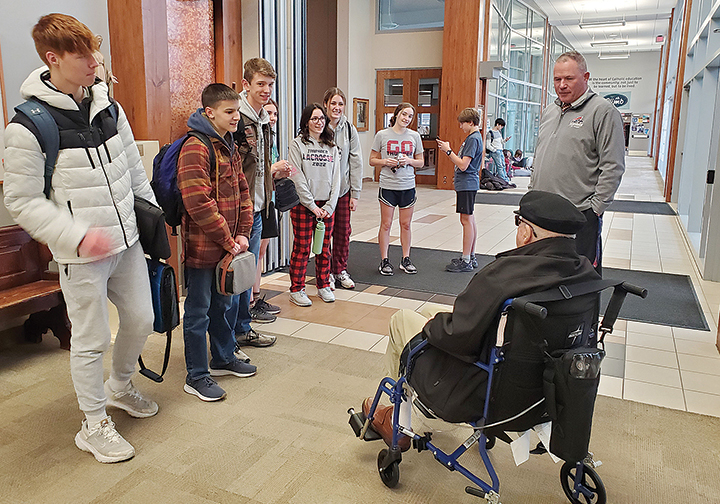
Out of that focus was born something new — a director of faith formation.
And it worked, according to Father Thomas Maddock, 2011 academy graduate and associate pastor of Christ the King Parish in Topeka.
“It was evident from day one when I walked through the doors of the school that handing on the Catholic faith was the first priority,” said Father Maddock, ordained in 2021.
“Being part of a community for four years that prioritized the faith over everything had a huge impact on the way I saw the world and the Catholic faith,” he said.
Impacting vocations
To really see the impact of Archbishop Keleher’s legacy, one need look no further than your parish priest.
Between 1994 and 2004, Archbishop Keleher ordained 22 men as archdiocesan priests, plus a few more for religious orders in the archdiocese. These men have had, and will continue to have, a tremendous impact on thousands of people for many decades.
Archbishop Keleher had a broad and “integrated” approach to vocations, said Father Michael Hawken, pastor of Church of the Nativity in Leawood and the first archdiocesan priest ordained by Archbishop Keleher on June 3, 1994.
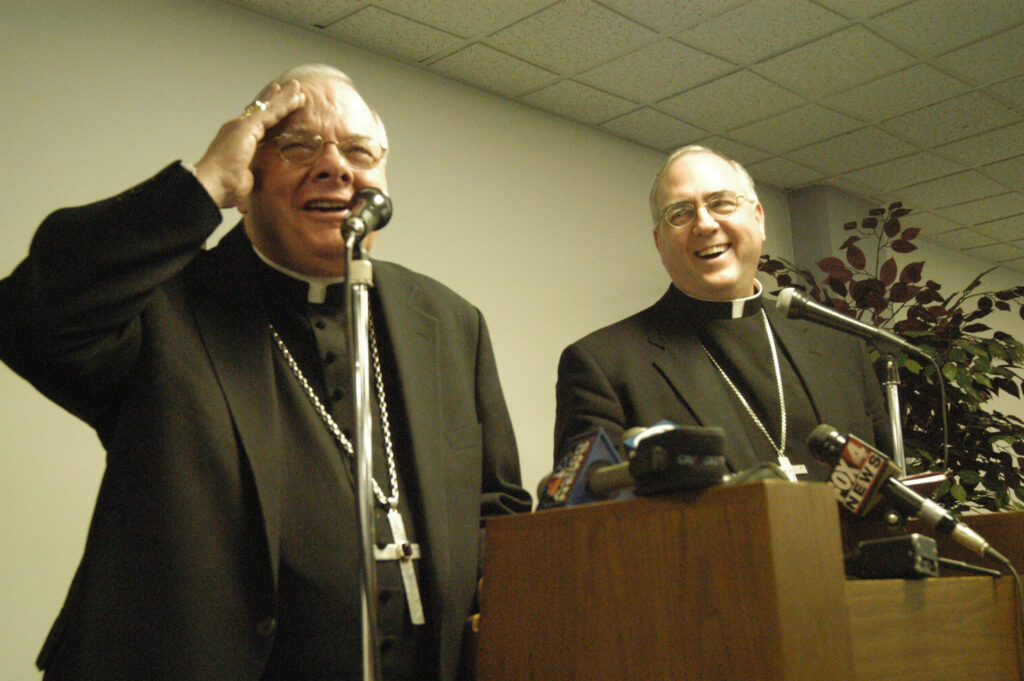
Vocation ministry was everyone’s work and everything played a role — summer camp, Catholic high schools, young adult ministry, eucharistic adoration, good marriages, holy families and more.
“He always tried to sow seeds among the presbyterate,” said Father Hawken. “First of all, he was a good example. We all knew Archbishop Keleher was happy being a priest and loved being with other priests. He always had such a good time with us. We all knew his vision that a joyful priest was going to be attractive for vocations.”
Role model
Archbishop Keleher had a significant influence on Father Keith Chadwick’s vocation to the priesthood, in particular.
Father Chadwick, who’s now the associate pastor at Holy Trinity Parish in Lenexa, knew the archbishop as a frequent visitor and supporter of St. James Academy in Lenexa when he was a student there.
“I certainly looked up to him as a mentor,” said Father Chadwick. “He always gave great advice on how to look at life and how to talk with people.”
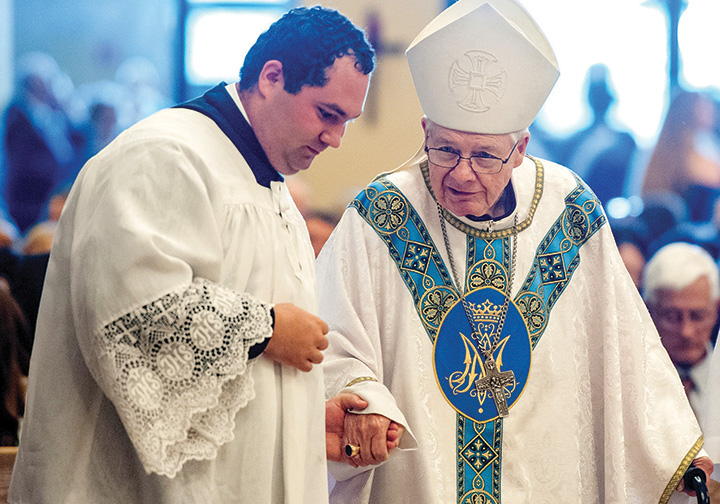
The pair kept in touch, with Father Chadwick visiting Archbishop Keleher throughout his seminary years.
He continued those visits up until the moment the archbishop passed away.
“Most times [when] I went to visit him, when I’d walk in the door, he’d be sitting and praying the rosary either in his chapel or in his recliner,” said Father Chadwick. “His trust in the Blessed Mother was beautiful to see.”
Archbishop Keleher influenced the priest’s own ministry.
“I really admired his memory of knowing people’s names,” said Father Chadwick. “I admired that when he talked with someone, he gave them his full attention.”
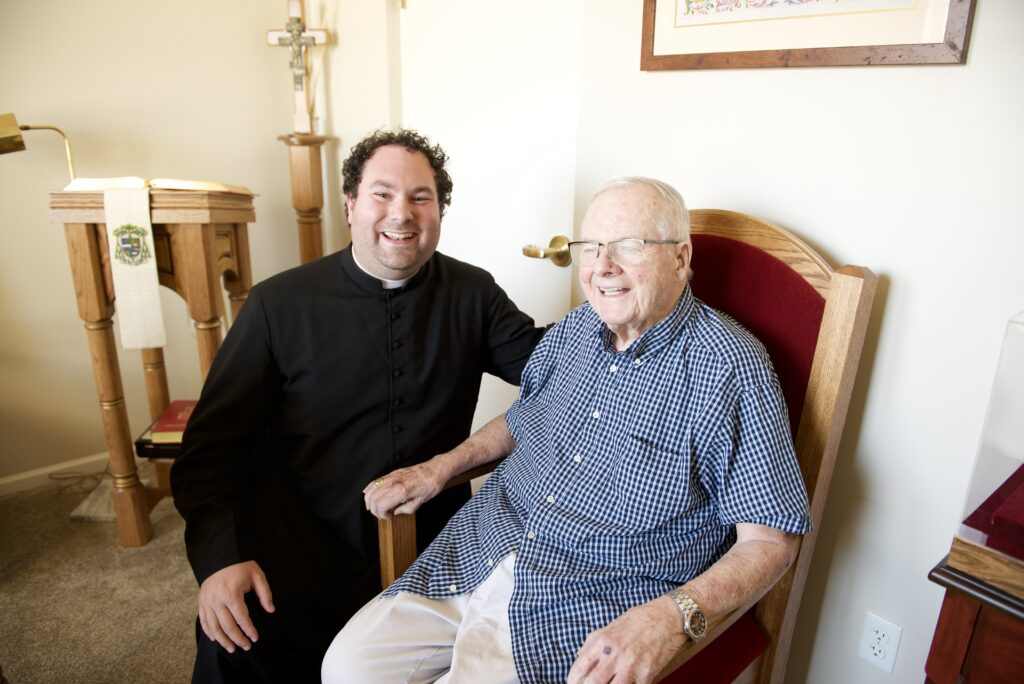
Father Chadwick was honored to be among several friends who were with the archbishop the night he died and to anoint him.
“He certainly was an example to look up to in life,” said Father Chadwick, “and I would strive to have as holy of a death as he did.”
Final years
As retirement age approached, Archbishop Keleher asked Pope John Paul II for assistance to ensure a smooth transition, and on Jan. 7, 2004, Auxiliary Bishop Joseph F. Naumann from the Archdiocese of St. Louis was appointed coadjutor archbishop. Archbishop Keleher officially retired on Jan. 15, 2005, upon Archbishop Naumann’s installation, and became archbishop emeritus.
In subsequent years, he was almost as active in retirement as he was in office. In his first year of retirement, he returned to the classroom to teach his favorite subject — the Second Vatican Council — at Mundelein Seminary.
He continued to confirm youth in archdiocesan parishes, attend events at St. James Academy, and in 2019, was honored by the University of Saint Mary in Leavenworth by the naming of its Keleher Learning Commons in his honor.
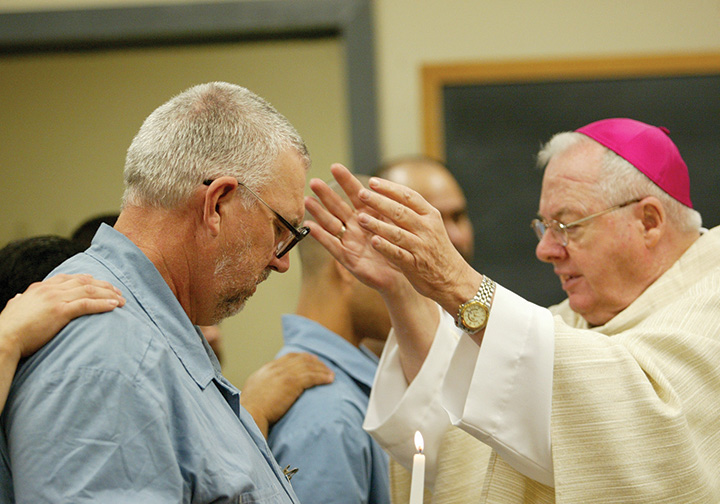
He also continued to carry out his prison ministry until his declining health made it impossible.
In his final years, health concerns limited his activities. And recently, an investigation by the attorney general of Illinois into clerical sexual abuse faulted the handling of then-Bishop Keleher and other bishops of Illinois of allegations against priests in their respective dioceses.
Archbishop Keleher was preceded in death by his parents and sister Rita Zick. He is survived by two nephews, Steven and Robert (Kim) Zick, both of Chicago; a niece, Dianne James, of Boston; five great-nieces and nephews; and numerous cousins, both in the United States and in Ireland.

Visitation will be held at Curé of Ars Church, Leawood, from 3 to 5:30 p.m. on Nov. 17, followed by the Vigil for the Deceased at 5:30 p.m.
A Mass of Christian Burial will be celebrated at 11 a.m. on Nov. 18 at Curé. Archbishop Joseph F. Naumann will be the main celebrant and Father William O’Mara will be the homilist. Burial will be at Gate of Heaven Cemetery in Kansas City, Kansas. Memorials may be made to Catholic Relief Services and to the Sisters, Servants of Mary, in Kansas City, Kansas.






